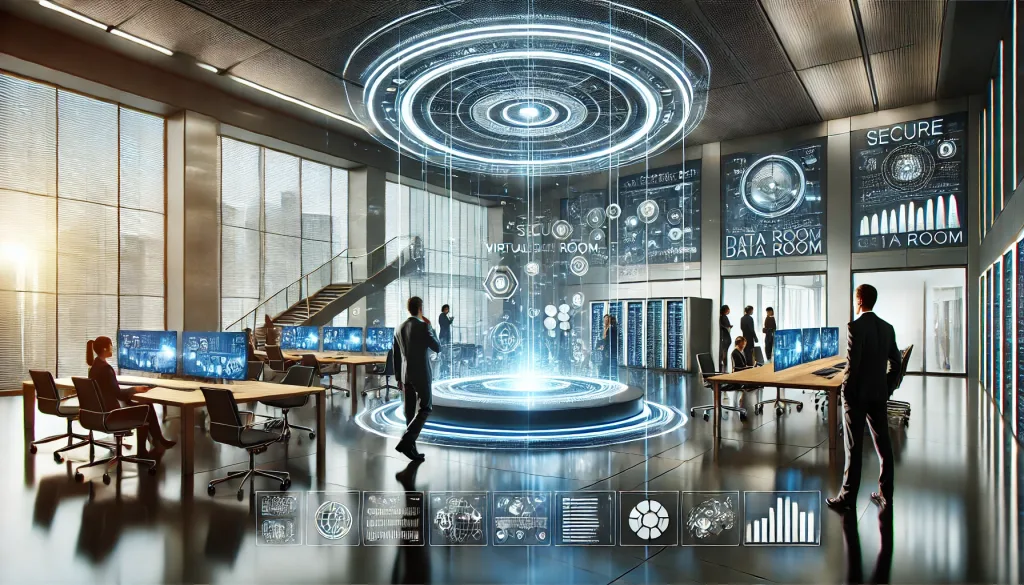
What’s New in VDR (Virtual Data Rooms) Features in 2025: Key Innovations
Virtual Data Rooms (VDR) are rapidly evolving to meet the needs of modern businesses. In 2025, these platforms are setting new standards for data management, offering advanced tools to enhance security, collaboration, and overall efficiency. This article explores the key innovations that define VDR technology in 2025 and how they are transforming the corporate landscape.
The Importance of Virtual Data Rooms in Modern Business
Virtual Data Rooms (VDR) have become indispensable for managing sensitive information securely and efficiently. Their adoption spans across industries, from finance to healthcare, as companies strive to maintain confidentiality while optimising workflows. In 2025, the focus is on pushing the boundaries of what VDRs can offer, with a strong emphasis on technological integration and user experience.
One of the most notable aspects of VDRs is their adaptability to various business needs. They are no longer limited to storing documents; they now provide tools for streamlined collaboration, regulatory compliance, and strategic decision-making. As digital transformation accelerates, VDRs have become a vital component of organisational success.
Enhanced Collaboration Capabilities
The ability to collaborate effectively is critical in today’s fast-paced business environment. VDRs in 2025 have introduced advanced features such as real-time document editing and integrated communication tools. These capabilities not only save time but also enhance productivity by allowing teams to work seamlessly, regardless of their physical location.
Furthermore, integrations with platforms like Microsoft Teams and Google Workspace enable users to synchronise workflows without switching between applications. This seamless connectivity ensures that collaboration is not hindered by technical limitations, making VDRs an indispensable tool for project management and deal-making.
Innovations in Data Security
Security remains the cornerstone of any VDR platform, and in 2025, significant advancements have been made in this area. With cyber threats becoming more sophisticated, VDR providers have introduced multi-layered security protocols to protect sensitive data. Features such as end-to-end encryption, dynamic watermarks, and access control mechanisms ensure that confidential information remains secure.
Another noteworthy development is the use of artificial intelligence (AI) to identify potential security risks. By analysing user behaviour and detecting anomalies, AI-powered VDRs can proactively address vulnerabilities. These innovations not only safeguard data but also build trust among users, making VDRs a preferred choice for industries dealing with highly confidential information.
Artificial Intelligence in VDR
The integration of AI into VDR technology has revolutionised how organisations manage and analyse their data. AI algorithms can automatically categorise documents, highlight key information, and even flag potential compliance issues. This level of automation reduces manual workload and minimises the risk of human error.
Moreover, AI-powered insights enable organisations to make informed decisions quickly. For instance, during mergers and acquisitions, AI can identify critical documents and provide valuable analytics, saving time and resources. These capabilities underscore the growing role of AI in enhancing the functionality of VDRs.

Improved User Experience
In 2025, VDR providers are prioritising user experience like never before. Intuitive interfaces and customisable features ensure that users of all technical skill levels can navigate the platform with ease. This focus on accessibility makes VDRs more inclusive, broadening their appeal across diverse user groups.
The shift towards mobile optimisation is another significant trend. With more professionals relying on mobile devices for work, VDRs now offer full functionality through their apps. This ensures that users can access, edit, and share documents on the go, maintaining productivity regardless of location.
Mobile Optimisation
Mobile-friendly VDRs are a game-changer for businesses that operate in dynamic environments. These platforms provide the same level of security and functionality as their desktop counterparts, enabling seamless transitions between devices. Users can review contracts, approve documents, and communicate with team members directly from their smartphones.
Additionally, mobile VDRs are equipped with features like offline access and push notifications, ensuring that users remain connected even in areas with limited connectivity. This adaptability makes mobile optimisation a crucial feature for modern VDRs.
